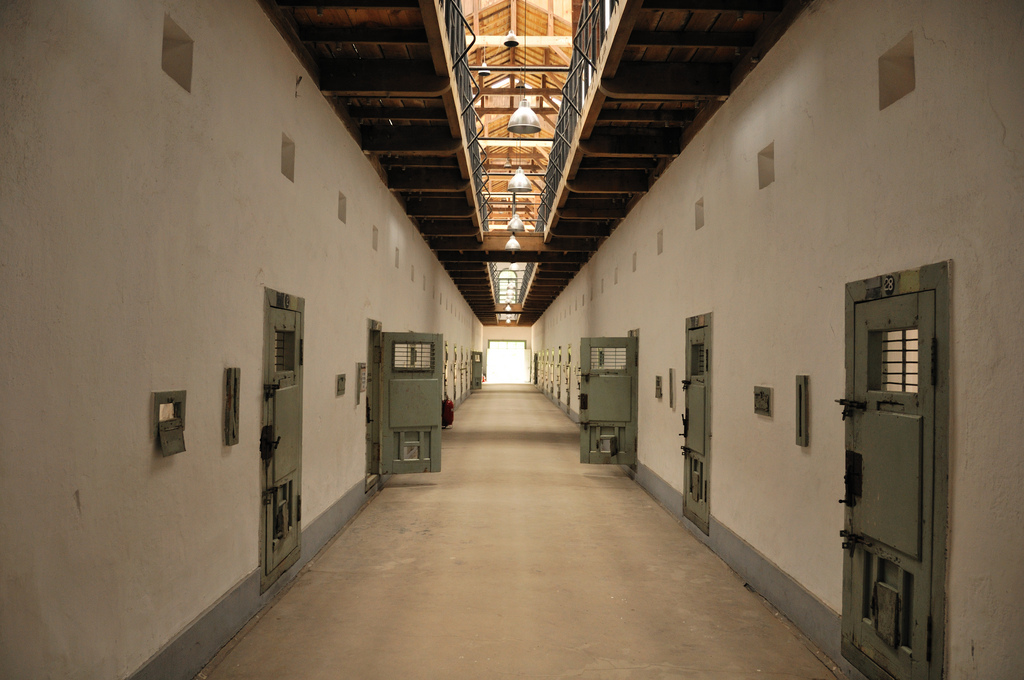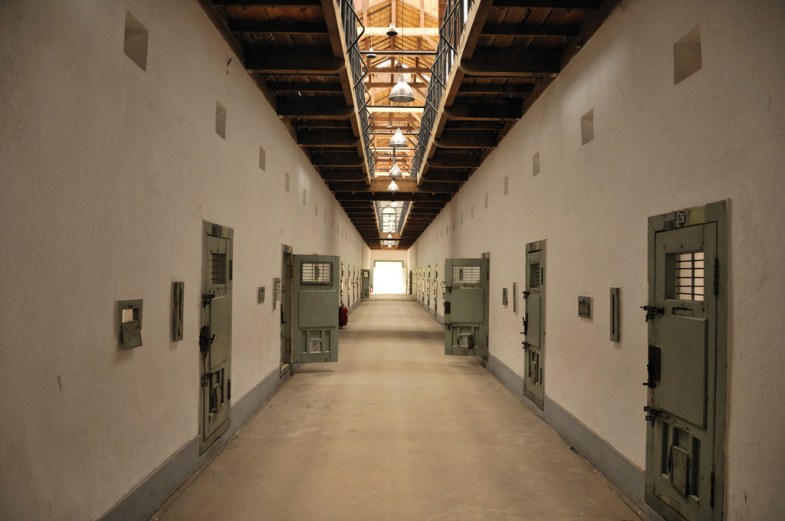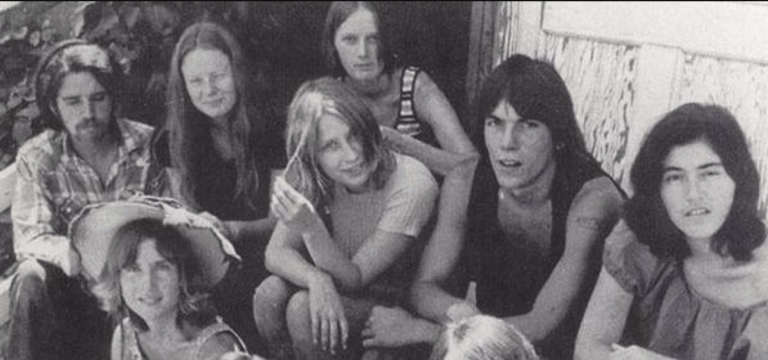Justice For Sale: Corruption And Abuse, The Remnants Of Greed (Part 4)
The laws and methods aimed at curtailing sexual assault generate political capital for politicians, but lack empirical data to prove their accuracy.
By Nolan Higdon

This is the fourth article (PART 1, PART 2, PART 3) in a five-part series examining the US legal system. The series collectively argues that corporate media and political rhetoric have made Americans acquiescent toward corruption in the US legal system. This piece uses Coalinga State Hospital in California to illuminate the corruption that is taking place inside the justice system’s institutions.

It was June 30, 2006 and Bernard Baran had already spent 25 years in jail for a crime he did not commit. Baran was a gay man, convicted of sexual assault charges on children in Western Massachusetts. Baran’s conviction was due in part to the hysteria and homophobia in the mid-1980s. While the courts wrongful conviction seemed like the worst of it, inside Baran faced unconscionable treatment. He was raped 30 times during his incarceration. Then in 2006, the courts finally allowed him to go free. But the court granted freedom could not erase the horrific memories of life on the inside. For an innocent man, the hell he endured could never be undone. In fact, his “freedom” was short lived. Baran passed away in September 2014.
Abuses like the ones experienced by Baran are common in US prisons, where corruption and physical abuse hold a tight relationship. They are the remnants of the greed that created many of these institutions and provided the inmates who occupy them. Due in large part to a lack of staff training and understaffing, many victims of abuse are the mentally ill. For example, in 2014, a North Carolina prisoner with a history of schizophrenia and bipolar disorder died of thirst while in solitary confinement after 45 days.
The elderly are also abused. In New Mexico, a private prison owned by the Corrections Corporation of America (CCA), put Carol Lester, a 73-year-old grandmother, incarcerated for embezzling money to fund her gambling addiction, in solitary confinement for challenging the lack of medical care at the facility. Women are often abused in prison. In California, over 144 bilateral tubal ligations, or tube-tying procedures, were forced on female inmates to prevent pregnancy. A 2014, report by the Justice department found that the Julia Tutwiler Prison for Women in Alabama saw inmates “raped by guards, forced to use toilet in front of staff, and take part in strip show contests.” Other abuses included exorbitant phone call charges and New York inmates were beaten and sodomized by guards.
Due to the “tough on crime” political rhetoric (discussed in PART 1 of this series) and the pursuit of prison industry profits (discussed in PART2 and PART3), prisons are increasingly extending inmates’ incarceration periods after their sentence expires. Coalinga State Hospital in California is a stalwart example of corruption and abuse in the prison system. It is a public hospital operated by both public and private sector employees. It opened in 2005 next to Pleasant Valley Prison in Fresno County at a cost of $388 million for Vanir Construction. At Coalinga, like other hospital prisons, administrators determine whether or not an inmate is fit to leave a facility after their sentence concludes. The inmates who are not granted release are referred to as civil detainees, because they have fulfilled their sentences for sexual crimes but were deemed unfit for release.
The Coalinga Prison has been a mind-boggling boondoggle for California. Each detainee’s confinement costs $185,000 annually or four times that of other prisoners incarcerated elsewhere. A portion of the cost results from the hospital being constructed in a region ravaged by a fungus that causes Valley Fever. Most people who get sick from Valley Fever feel flu-like symptoms and recover in a few weeks, but a small portion, especially those with a weakened immune system, can become very ill and die. The California Correctional Health Care Services pays $23 million annually for inmates and civil detainees with Valley Fever, which is a rate 600 times higher than Fresno County where the hospital is located.
The civil detainees at Coalinga State Hospital are not officially imprisoned, but are held in prison-like conditions. To enter the facility, visitors must have their identity investigated by staff, a sheriff-run lobby which includes walking through a metal detector, two moving chain link fence gates, a wall topped with razor wire, and then another lobby where staff check for weapons and identification again.
Most of those in the facility have been deemed sexually violent predators (SVPs). SVPs are individuals convicted of sexual offenses and deemed likely to offend once released. California voters and representatives passed voluminous legislation, upheld by the federal government, to empower law enforcement’s control over SVPs. Now an inmate in jail for any crime, who has a sexual based crime on their record, must undergo an evaluation to determine if he/she will commit a sexual crime once released. The Department of State Hospitals (DSH) has prisoners evaluated by a licensed “psychiatrists and/or psychologists.” If it is decided they may commit sexual assault upon release, they are labeled as a civil detainee and undergo “cognitive behavioral therapy (CBT) focusing on Relapse Prevention (RP) component” at a state hospital such as Coalinga. The DSH can only recommend a given SVP for CONREP, the statewide system of mental health treatment services but it is the court’s decision whether or not to release the SVP.
However, there exists a conflict of interest as the psychologist’s paycheck depends on keeping the SVP from offending again. Because the program legally mandates psychologists to be present, psychologists are hired at astronomical rates to taxpayers. Some are paid between $500,000 and $1.5 million. Meanwhile, husband-and-wife psychiatrists Joginder Singh and Mohinder Kaur took home $4.7 million from 2005 through 2011. California was found to have overpaid independent contractors connected to the Sex Offender Commitment Program budget by $49 million between fiscal years 2005-06 and 2009-10 according to a report by State Auditor Elaine Howle. However, the methods used to determine if an offender will commit sexual assault upon release have no proven rate of accuracy.
The laws and methods aimed at curtailing sexual assault generate political capital for politicians, but lack empirical data to prove their accuracy. In fact, a DSH study found that sex offenders were some of the least likely to reoffend. In 1997, parolees tracked for three years had a 5.3% recidivism rate for sex crimes, compared to a 68% for all other crimes. Critics of the sexual assault prevention laws include Columbia University’s Michael First MD; Psychiatrist Robert Halon, PhD; UC Berkeley Professor Franklin E. Zimring; Dr. Jesus Padilla, and DMH’s own Janice Marquis. They collectively argue that the detection system is not based on evidence and not producing the results it champions. In fact, both Gilton Petri and John Albert Gardner, III were paroled because the detection system found them mentally fit to return to the public without reoffending. However, once released they raped and murdered California youths. Their crimes forced California to admit that its SVP detection program was “ineffective and unsafe.” The separate cases of Petri and Gardner demonstrate that the state does not have an effective detection system. Instead it pays expensive contracts for evaluators to make arbitrary decisions which risk potential re-offenders being paroled and those who will not re-offend remaining locked up.
The abuse inside the facility goes beyond locking up individuals who may not assault again. In 2013, detainees drafted a list of grievances which challenge the hypocrisy of the program, outline abuses, and demand that California live up to its own legislation which mandates that all civil detainees are housed in the “least restrictive environment.” The abuses cited include witness’ accounts pertaining to detainee Cedro Zavala; who had his head slammed into a door by a staff member before suffering from a code blue (a code blue is a term used in hospitals to indicate a patient needing immediate resuscitation). Detainee William Baker claims to have been woken up and forced out his living quarters nearly naked by men dressed in all black with nylon over their faces. Detainees James Hydrick and Jesse Emmitt claimed to have witnessed “gay bashing.” They also claimed that a hospital officer killed a detainee who told them “You can’t prove it!” In August 2011, detainee Kenneth Huskey noted that the passing of fellow detainee Lawrence Smith marked the 7th unnecessary death in the facility since May of 2013.
Inmates have also filed complaints regarding the charges they incur during their forced incarceration. Detainee Michael Orey amassed $427,000 in debt in two years at the hospital largely due to the $537.14 a day charged for lodging at the facility. In October of 2013, the Disability Rights of California let Orey know that the hospital created a trust for him in which all money over $500 is confiscated for his treatment– this being the very same treatment that has proven to be inconclusive at best. Furthermore, if released he must pay off the money or his bill will go to collections. To make matters worse, Orey was given an itemized list of all the costs he incurred. Some of the items, which including medications, he claims he never received. Kenneth Huskey and six others found similar inaccurate charges. Coalinga’s Medicare Part D provides some funding for the medication never received by the detainees. Thus, taxpayers are paying for some unknown entity to make profits. Orey filed a complaint in the California Superior Court over what he called “fraudulent billing” including being enrolled in Medicare Part D without ever signing any forms. The hospital’s budget in part depends on detainees paying off debts. Since the detainees have no jobs, the taxpayers cover the costs of the inmates’ bills to the private corporations. As a result, Coalinga cost taxpayers $198 million of the state’s $1.3 billion hospital budget in 2012.
While taxpayers should look at the facility and its programs as a costly disaster, the city of Coalinga sees it as an economic boom. Coalinga was hit by a 6.7 earthquake in 1983 that essentially destroyed the city. The prison and hospital became the city’s economic savior. Coalinga hopes that mental health practitioners will open private practices increasing revenue in the city, which will help to expand the community college. In fact, the DMH is doing its own boosterism in Coalinga by promoting it as safe and noting that, “we are in the midst of a housing boom with an estimated 1,000 new homes in the planning stages for the next few years. Housing prices remain affordable…Coalinga is a very clean and nice hometown.”
Local politicians defend this problematic hospital because it produces political capital and creates economic viability in the region. Detainees, due to their imprisonment and the law, can only challenge their incarceration onsite at the hospital. However, the inmates who have challenged their incarceration have been informed by Coalinga’s Executive Director, Pam Ahlin, that “neither Coalinga State Hospital nor the Department of Mental Health is the proper venue to argue [their] commitment issues.” From her perspective, the detainees are there due to their psychological evaluations and it is not the hospital’s job to decide if they are fit for release. In the meantime, people like Michael Orey, who was deemed a low risk offender, remain locked up in order to keep the hospital at capacity. Tom McNichols, in his September 2008 work Trapped in the Treatment Mall, argued that “most of the 762 [Coalinga] patients currently in residence may never leave–except in a box.”
Coalinga is one example of the abuse that increases as California builds more facilities. The rhetoric of support for new facilities emphasizes a harsh policy on crime, lowering costs to taxpayers, and providing a boom to an economically failing city. In 2011, Stockton, California was on Forbes most miserable cities list as their median housing price dropped from $431,000 in 2005 to $142,000 in 2011 with an 18% unemployment rate. In 2013, politicians delivered what was perceived as the answer to their problems: a $900 million prison hospital. The 1772 bed facility fell short of its 1818 bed goal. Tons of jobs through the Department of State Hospitals, California Prison Health Care, and the Department of Corrections and Rehabilitation were immediately offered. However, in January 2014, the flow of inmates was halted due to poor, unsanitary conditions that contributed to a scabies outbreak.
Despite the setbacks and cost, the state keeps paying for the construction of facilities near the Stockton institution. Nearby the Stockton prison-hospital, a $2.2 million secure ward was built at San Joaquin General Hospital for patients who needed surgeries or higher level care. The Dewitt Nelson Youth Corrections Facility that closed in 2008 is right next door. It is undergoing renovations to create a 1,113 bed prison for mental health patients. A contract for about $9 million went to Hensel Phelps Construction Company for renovations to DeWitt Nelson. The money came from AB 900 that “authorized more than $7 billion in bond funding for state prison projects, reentry facilities, and local jail beds.”
The abuses and corruption in the US legal system are visible in the streets with police and red light cameras, in the courtroom with judges and prosecutors, and inside the walls of prisons and state facilities (discussed in PART 1, PART 2, PART 3). Collectively, politicians and corporations have hijacked the justice system in their pursuit of wealth and power. However, as the next article will describe, the increased visibility of corrupt practices in the legal system is accompanied by growing resistance. Nationally, citizens are demanding justice for those abused by the corrupt justice system. The next article will examine how the innocent and the guilty respond to the corruption that permeates inside the US legal system. ![]()
This post originally appeared at Project Censored. For the full cited version, please click here.



